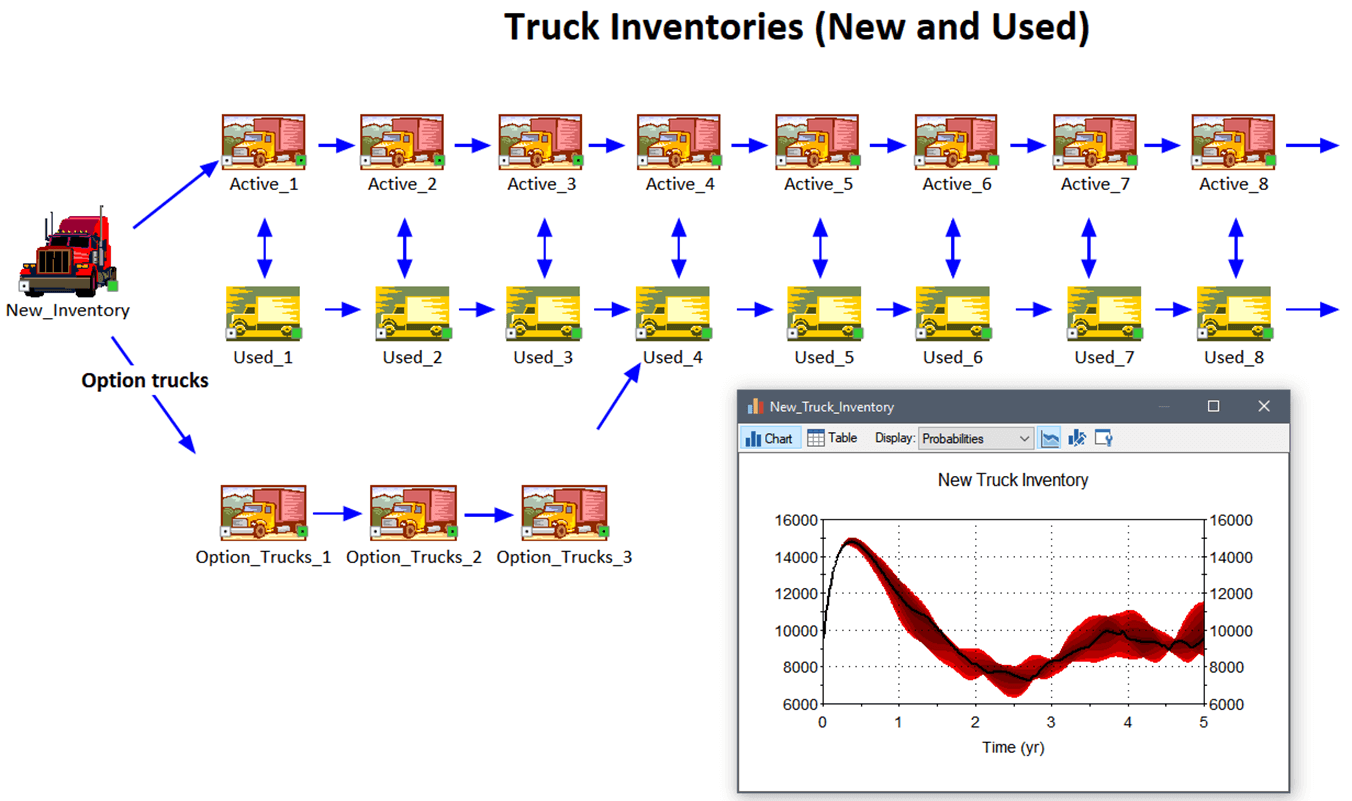Modeling the Complex Dynamics of the Long-Haul Truck Market

The objective of this model was to better understand the dynamics of the long-haul truck market. In particular, how would decisions regarding new truck pricing (and buy-back options) impact future truck sales and prices (assuming a range of future economic conditions)? A secondary objective was to better understand how the current system (set in motion by decisions made over the last few years) would likely evolve over the next few years.
This simplified example includes two classes of vehicles (active and used) and eight age groups (referred to as an aging chain). The model assumes that active vehicles would have a high utilization and active vehicles would be transferred to used vehicle lots if demand dropped (i.e., their owners would not let them sit idle for long). Some trucks leave the system early (due to wrecks) and the remaining trucks leave the system when they reach 8 years, (i.e., they are scrapped or exported). The model simulates the number of active and used trucks in each age category, the price of new and used trucks, and the sales rate of new trucks, all as a function of time.

